Fanatec’s reveal of the CSL DD in 2021 ushered in a new era for sim racers looking for an affordable direct drive wheel base. It brought the best kind of force feedback to a section of the market that previously had no option but to go belt driven or spend close to $1,000 or more. But is the CSL DD a good choice for you?
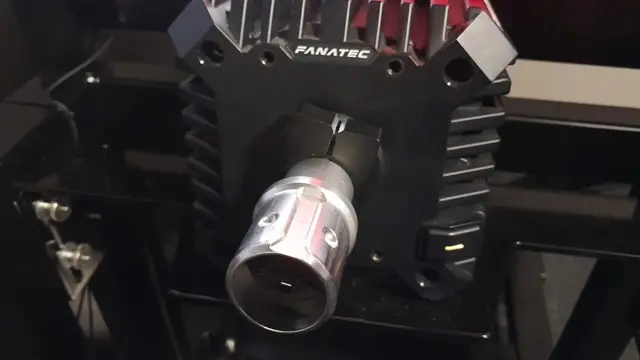
In this review, I’ll go through my personal experience using the CSL DD wheel base and explain the pros and cons, and I’ll discuss who I think should and shouldn’t buy this product.
Note: While there are two versions of the CSL DD available (the 5 Nm and 8 Nm versions), most of what I say will apply to both. I’ll talk more about the 8 Nm version and the Boost Kit 180 specifically later on. I won’t be discussing the GT DD Pro here.
Fanatec CSL DD Pros & Cons
| PROS | CONS |
| Affordable direct drive wheel base | The costs add up when you factor in a wheel rim and the boost kit |
| Great entry point for those looking to take their sim racing up a level | 5 Nm will likely not be enough for many sim racers |
| Highly compatible (it even works on Xbox) | There are some notching and connectivity issues |
| It’s upgradable |
The Design Of The Fanatec CSL DD
The first thing you’ll notice about the CSL DD is the shape and size of the wheel base. It’s a compact bit of kit, taking the form of a (rough) cube that’s about 38 cm tall (15 inches). It has sleek fins on the sides that serve a dual purpose. Not only do they act as a heat sink (meaning there’s no need for a fan), but they also contain slide rails for mounting via T nuts (and there are more of these on the bottom).
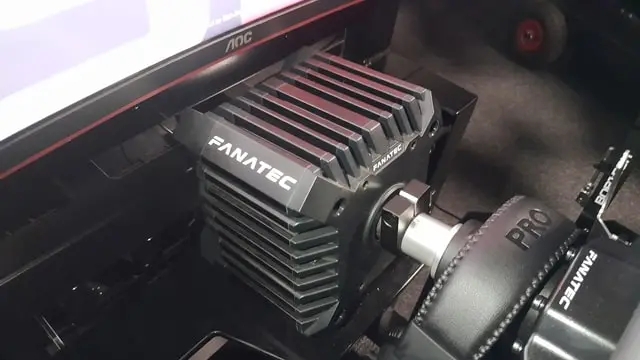
This means it’s a very efficient space saver, which makes it a decent choice for sim racers that don’t have much room for a bulky wheel base (such as Fanatec’s humungous DD2). It’s also quite lightweight, at just 6.85 kg (15.1 lbs). This means it’s also ideal for those that don’t have the strongest of sim racing rigs.
Do You Need A Sturdy Rig?
But this is quite a contentious and important point, as the wheel base is marketed as being compatible with desks (thanks to the optional table clamp, which is sold separately). I’ll talk more about the performance in a later section, but it relates to the design of the CSL DD as a result of trying to act as a beginner and budget friendly direct drive wheel base (and it does a great job of that).
And while 5 Nm is not a huge amount of torque by direct drive standards, it’s still enough to rattle a table or weak sim racing cockpit. Even my Thrustmaster T300 RS can put my Playseat Challenge through its paces when cranked up to the max, and it’s got much less torque than this (and it’s belt driven).
If you use this in a cockpit like the Playseat Challenge or anything else that isn’t an aluminum profile style rig, you’re going to feel a fair bit of movement. It’s not going to shake things apart, but it’s going to be noticeable. And you can use it on a desk (I tried) and it won’t be a terrible experience, but it doesn’t feel robust enough to withstand regular use for a long period of time (the clamp that is).
Note: I’ve also seen comments elsewhere from people over-tightening the clamp to minimize wobble to the point that the clamp breaks. You need to get it pretty tight to have minimum wobble, but don’t go too far!
At Flow Racers, we always recommend you use a dedicated rig if possible, but not everyone can go down that route in the beginning. So, I do have to say that the CSL DD will be fine on a desk, but you will notice the power of it almost begging you to use something more secure eventually. But it’s not just the power that’s important here, as the detail and fidelity of the force feedback is key too.
You Can Lose Some Detail
If you don’t use a solid setup, you’ll miss out on a fair bit of that detail as your shaky rig or desk absorbs some of the frequencies rather than sending them through your hands (you can tell as your desk will be shaking!). It’s not going to be incredibly noticeable for everyone, but there’s no doubt you’re losing something.
Detail is one of the selling points of direct drive wheel base technology, so it would be a shame to compromise on this by not using a solid setup. But I will stress again that the CSL DD can be used on something like a Playseat Challenge or Next Level Racing rig, or even a desk, and it’s designed that way to be beginner and budget friendly. But that’s enough about that aspect for now, and let’s go back to the rest of the CSL DD’s design.
Passive Cooling
I mentioned it doesn’t need a fan, which is a welcome change moving on from my T300 RS, which ran louder than my already out of breath PS4 by the end of it. It still worked fine, but having a quiet wheel base like this is such a stark contrast.

In terms of ports, you get everything you need to run your Fanatec setup from this wheel base. You can connect your pedals, shifter, and handbrake directly if you have them, and then run just one cable (from the base) to your PC. This keeps things tidy and convenient, although it’s not important for those planning to mix and match equipment on PC.
If you’re on Xbox, you can also benefit from the design of the CSL DD and all of its direct drive detail, as the base is Xbox ready. You will need an Xbox compatible rim though. You can connect that rim to the shaft fairly easily using the wheel rim’s quick release system, and the CSL DD is designed to be compatible with Fanatec’s QR2 (whenever that comes out).
Connection Issues
A common issue to be aware of involves the shaft coming loose within the wheel base itself after heavy use, causing complete connection loss. I never had this issue, but it’s common enough that it’s worth mentioning here. It seems to be a fairly simple fix, as you just need to unscrew a C-clamp near the base of the shaft and push it back in, but it’s something you shouldn’t have to do at all (although it won’t affect every unit).
That’s all on the design front, and overall I’d give the CSL DD an 8 in this department. It’s compact and lightweight, which makes it ideal for beginners and those without much space, but the shaft connection issues cannot be ignored.

Fanatec CSL DD Build Quality
The CNC-machined aluminum casing of the CSL DD is what makes it such a lightweight and fan-free wheel base, but this also makes it a very durable choice too. The overall build quality is pretty standard from Fanatec, and so it’s only really positive things to say on that front.
It can definitely take a lot of use and abuse, and it’s a solid bit of kit that won’t show much movement if you mount it properly. However, as I mentioned in the design section, there are a few parts that could have been made better, namely the connection between the shaft and the base itself.
Some Issues
That’s not an issue I had, and I’ve already gone into detail on it above, but it is related to both the design and the build quality of the CSL DD, so it’s worth mentioning again. The other important parts are built well, with the shaft featuring a carbon fiber composite design. Potential connectivity issues aside, the shaft itself is an incredibly durable component.
One other slight issue I found was that feedback does sometimes feel a bit notchy, as if I can feel the magnets in the motor. This isn’t something I am constantly aware of, but it happens enough to notice it from time to time when I use low force feedback settings or when travelling down a straight and the feedback is very light.
This is just down to the way the base has been made and the positions of the magnets inside, and it’s not something that’s exclusive to the CSL DD. However, it does remind you that you’re using a cheaper unit than something like a Simucube, but given it’s not something I am always aware of, it’s a minor tradeoff.
A Solid Wheel Base
The base features the same high-accuracy Hall position sensor as the Podium wheel bases, and this is another mark of the CSL DD’s excellent build quality that arguably goes beyond what its price point suggests. There isn’t much else to say about the construction of the CSL DD, and I’d give it a 7, because while it is largely well made, there are some issues that cannot be ignored.
How Does The CSL DD Perform In-Game?
On to the performance factor, and the CSL DD does a great job of introducing you to the possibilities direct drive has to offer. It provides detailed and reasonably strong force feedback, even without the boost kit. It’s a level above the likes of a top end belt drive wheel base such as the Thrustmaster T300 or TS-PC Racer (which can reportedly produce more torque than the stock CSL DD).
If you’re an absolute beginner, even 5 Nm of direct drive is likely more than what you need. This is definitely designed to be the first step into the world of direct drive for someone who already has some experience with gear and belt-driven wheel bases.
It’s Definitely Enough
It’s obviously not going to compete with the likes of Logitech’s Pro Wheel or a Simucube base in terms of raw power or clarity of force feedback, but this is definitely going to be good enough to keep you competitive well into your sim racing career.
You can feel the power of course, but even with the boost kit (which I do recommend), it’s the fidelity of the feedback that’s more impressive. You can feel the road surface very well, and the loading when you go through the likes of Eau Rouge and Raidillon at Spa are very pronounced when compared to a belt drive wheel base.
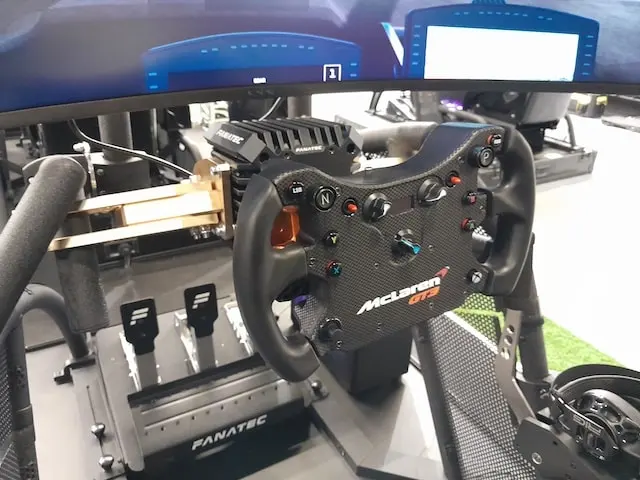
Obviously the power is somewhat limited at 5 Nm, but this was still enough for me to really enjoy racing with it. It is a different beast when you add the boost kit and take things to 8 Nm, but that won’t be essential for beginners. If you have experience with other, stronger direct drive bases, this will still feel a bit weak, but 8 Nm will definitely still be enough for most.
I experienced some clipping with the 5 Nm and the 8 Nm of torque, but that’s natural with any wheel base when you have the game outputting more feedback than the base can handle. It was nothing worrying, and it only kicked in when I cranked things right up. You get amazing detail both at high levels and low levels of torque, so I am really happy with its performance in that department.
Adjustability
As for adjustability and tweaking of the feedback itself, it’s made easy thanks to Fanatec’s standard and advanced tuning menus. The former caters well to beginners that want a plug-and-play experience, while more experienced racers will be able to tune things further with the wider range of options in the advanced menu.
Unlike the DD1 and DD2, you’ll need a wheel rim to access the tuning menu as there is no screen on the wheel base itself (which is no issue in my opinion). You can change things like sensitivity, damping, and force feedback effect intensity, and when you pair this with your chosen game’s settings, you can basically tweak every aspect of the experience.
Overall, I’d say the CSL DD gets an 8 out of 10 in terms of performance, but now let’s discuss the value for money aspect of the base.
Is The CSL DD Good Value For Money?
Any direct drive wheel base that costs less than $500 is going to get the attention of many sim racers. The 5 Nm version of the CSL DD is one of the cheapest direct drive options on the market, and even with the boost kit it’s still incredibly budget friendly when compared with most other offerings out there. However, it’s still a lot more than a belt driven wheel base will cost, and you don’t get a rim included either.
So, when considering the value for money, we need to look at it from a few different angles. If you already have a compatible wheel rim, then the value for money is incredible. You’re getting very detailed direct drive force feedback for a fraction of the price of many other options out there.
What About For Beginners?
But if you’re a beginner wondering if the CSL DD is the right choice for you, and you don’t have a wheel rim yet or a set of pedals, the price increases quite dramatically. The 5 Nm CSL DD costs less than $400, but if you combine it with even Fanatec’s cheapest wheel rim and their cheapest set of pedals (the non-load cell CSL 2-pedal set), you’re looking at closer to $550. Tag on the boost kit and you’re at about $700.
That’s no longer all that budget friendly for an absolute beginner. But if you’re in the Fanatec ecosystem already, and you already have a set of pedals and a wheel rim, then the CSL DD is a cost effective way to get into direct drive. This is now Fanatec’s cheapest and most basic wheel base, as they discontinued their belt driven wheel bases.
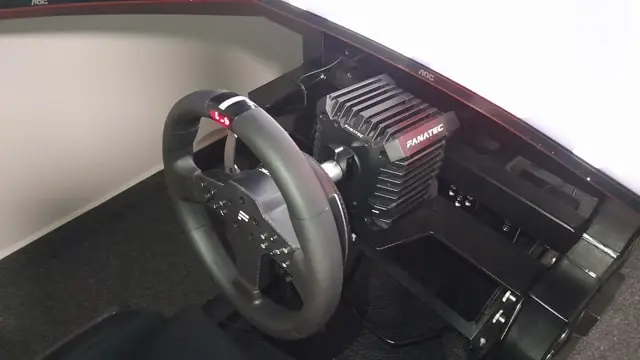
So, in terms of serving as a wheel base-only upgrade, that’s only going to be a cost-effective option for those with now outdated Fanatec hardware (which is a shrinking part of the market). If you’re thinking of coming from another manufacturer though, such as Logitech or Thrustmaster, then this can definitely be a good way to upgrade.
One Of The Cheapest Options
Fanatec’s goal seems to be to only offer direct drive, while also catering to the beginner and budget friendly market. I think they’re still missing the mark on the latter (as $300+ can get you a wheel base, rim, and pedals in other ecosystems, albeit not direct drive). But there’s no arguing with the fact this is one of the cheapest direct drive options out there.
Personally, I think it’s really only ideal (in its 5 Nm form) for a small share of the sim racing market. It’s just too little power for those that are getting serious about sim racing, and too expensive for absolute beginners. But if you can afford it paired with the boost kit, the 8 Nm will likely last you a very long time before you start wanting more.
So, value for money on this one is a bit tough. I’d say it’s about 6-8 out of 10 depending on your needs and experience level. Basically, it can be really good value for money for really specific situations, so what are those situations?
Who Should Buy The Fanatec CSL DD Wheel Base?
I think the CSL DD is ideal for a few particular kinds of sim racer:
- Absolute beginners with a reasonable budget that want to start off with direct drive
- Those in the Fanatec ecosystem that want to upgrade over an older base like the CSL Elite
- Sim racers looking to get into direct drive after using a belt or gear driven wheel
- Xbox sim racers that don’t have the budget for a DD1/DD2
Those who I don’t think should buy the CSL DD include:
- Absolute beginners on a tight budget (you’d be better off spending your money on a good rig and pedals)
- More advanced sim racers that need a lot of torque (or feel they might quickly outgrow 5-8 Nm)
- Casual sim racers that think direct drive will instantly make them faster (it won’t, and you can have just as much fun on something like a Logitech G29/G920 if torque and force feedback fidelity isn’t that important to you)
Basically, if you’re used to something like a Logitech G29/G920/G923 or a Thrustmaster T150/TMX, this will be an excellent upgrade. If you’re coming from a more advanced Thrustmaster base like the TS-PC Racer or even the old Fanatec ClubSport wheel base, it may be worth saving your money until you can afford the jump to a Simucube base or even the Fanatec DD1/DD2.
Do You Need The Fanatec CSL DD Boost Kit?
Obviously you don’t need the boost kit, but it definitely does make this a far better product overall. 5 Nm is fine for a while and it will be enough for many beginner to intermediate sim racers, but 8 Nm just gives you that bit extra, and you get some additional headroom to prevent clipping as well.
If you’re coming into this looking for an upgrade over a belt driven wheel base, then 5 Nm will be enough to begin with – you can always upgrade later with the boost kit. But if you’re looking for as much torque as possible and want to really be able to get the most out of the CSL DD (such as if you’re on Xbox and want budget friendly direct drive power), then go for the boost kit.
Fanatec CSL DD Key Specs
| Spec | Value |
| Dimensions | 38 x 29 x 25 cm |
| Weight | 6.85 kg / 15.1 lbs |
| Peak Torque | 5 Nm |
| Main Materials | CNC-machined aluminum |
| Power Supply | 90 W for 5 Nm / 180 W for 8 Nm |
| Ports | Data, Handbrake, Pedals, Shifter (x2), USB-C |
| Compatibility | PC / Xbox |
Alternatives To The Fanatec CSL DD Wheel Base
MOZA R5 Wheel Base
The R5 from MOZA is probably the most similar option to the CSL DD on the current market. It’s a little cheaper, but very similar in shape, size and force feedback strength. It can output 5.5 Nm of torque, and it’s very detailed, just like the CSL DD.

You can also pick up the R5 in a bundle, and this comes with a wheel rim and pedals for a fair bit cheaper than you’ll find any Fanatec bundles. This makes it a good choice for absolute beginners on PC (it’s not console compatible), but it’s another option where you may be left wanting more, and there’s no boost kit for this like there is with the CSL DD. There is a 9 Nm R9 wheel base though.
Thrustmaster T300/TX
If you want a cheaper alternative to the CSL DD and you don’t mind losing out on direct drive force feedback, the T300 (PlayStation) and TX (Xbox) wheel bases from Thrustmaster are some of the best options on the market. They’re a great starting point for beginners, and they’re also a decent upgrade option for those that started on something like a T150 or Logitech G29.
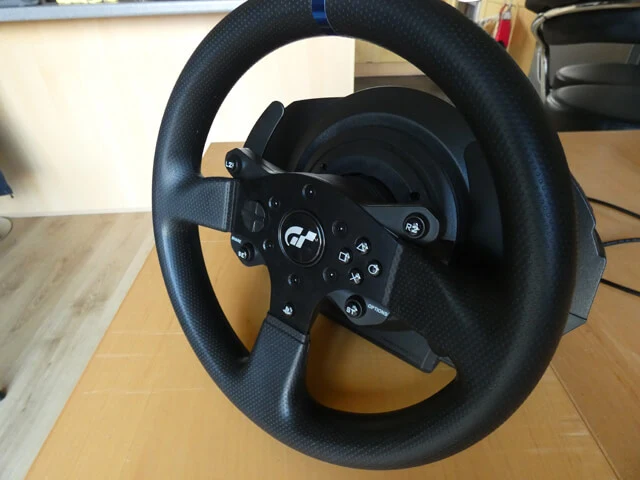
They offer very good force feedback for the price, and while it’s not direct drive, it’s still going to be detailed and strong enough for beginners. However, these do offer lower value for money than Fanatec’s CSL DD, as they’re not direct drive, feature quite a lot of plastic, and they can end up costing more than the CSL DD. But still, they’re ones to check out if you’re on the beginner end of the spectrum and want an all-in-one package.
Logitech Pro Wheel
If you’re looking for something on the other end of the scale, and you need just a little more power than the CSL DD can offer, the Logitech Pro wheel is worth checking out. It offers 11 Nm of peak torque, which is getting into the ideal territory for those serious about sim racing that want something that will last a big chunk of their career.
However, the design of the Logitech Pro wheel does leave a little to be desired, and there is currently only one wheel rim available. But it is console compatible, so it’s a choice worth considering for PlayStation and Xbox players, although it’s mighty expensive!
If none of these look like the right choice for you, we also have a full list of CSL DD alternatives
Final Thoughts
The CSL DD from Fanatec is one of the most exciting products to have arrived on the sim racing market in recent years. It brings budget friendly direct drive force feedback to a larger market, and it does so while being compact, highly customizable, and upgradeable too.
I created and have been writing on this site since 2019, collaborating with drivers, coaches, engineers and manufacturers to provide you with the most reliable information about motorsport. I also make beautiful car posters and track posters.



